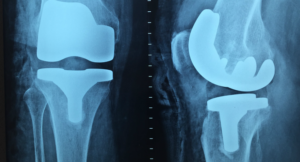
New thermoplastic material could enable tougher, more versatile bone implants
Canadian Plastics
Materials Research & DevelopmentDeveloped by researchers at the University of Birmingham, the material is a type of nylon and has shape memory properties that enable it to be stretched and molded but able to reform into its original shape when heated.

Photo Credit: University of Birmingham School of Chemistry
A new thermoplastic biomaterial, described as tough, strong and also easy to process and shape, has been developed by researchers at the University of Birmingham in Birmingham, UK, and could be useful for medical devices such as bone replacements, where minimally invasive surgery techniques require additional flexibility in implant materials.
Developed by a research team at the University’s School of Chemistry, the material is a type of nylon, the researchers say, and has shape memory properties that enable it to be stretched and molded but able to reform into its original shape when heated. The team was investigating ways to use stereochemistry – a double bond in the backbone of the polymer chain – to manipulate the properties of polyesters and polyamides (nylons).
Biocompatible polymers are widely used in medicine, from tissue engineering to medical devices such as stents and sutures. Although much progress has been made in the area of resorbable or degradable materials that are broken down by the body over time, there are still just a few non-resorbable polymers that can be used for longer-term applications. Existing non-resorbable biomaterials, like nylons, currently commercially available suffer from a variety of limitations: metal implants, for example, can wear poorly, leading to particle fragments breaking off, while composite materials can be difficult to process or extremely expensive.
By contrast, the new material can be made using standard chemistry techniques and offers a stable, long-lasting option, with mechanical properties that can be tuned for different end products.
“This material offers some really distinctive advantages over existing products used to manufacture medical devices such as bone and joint replacements,” said senior researcher Professor Andrew Dove. “We think it could offer a cost-effective, versatile and robust alternative in the medical device marketplace.”
A further advantage of the material, the research team said, is its amorphous structure. “For many plastics, including nylon, the toughness is often dependent on their semi-crystalline structure, but this also makes them harder to shape and mold,” said Josh Worch, the postdoctoral researcher who led the work. “However, our new plastic is as tough as nylon, but without being crystalline so it is much easier to manipulate. We believe this is only possible due to the way we have used stereochemistry to control our design.”
The research team were able to design and produce the plastic, which is now covered by a patent, and test it in rats to prove its biocompatibility. The team now plan to explore further ways to fine tune the material and its properties before seeking a commercial partner.
Source: University of Birmingham
